Text
Social Online gaming
Social gaming most commonly refers to playing online games that allow or require social interaction between players, as opposed to playing games in solitude. (Wikipedia) I must admit I am not part of the 47% of females that play video games, or have partaking in an online social gaming community but I do remember a time when my husband would stay up late at night playing Gears of war against complete strangers in various parts of the world. By playing online games, one can forge new friendships with people in different countries that they might never have met otherwise and engage in ‘incredible collaborative environments’ together (Alexander, 2014).
We humans are playful creatures and gaming provides achievements to the gamer in such forms as rewards, status, competition, and online social collaboration with other people that share the same hobby or interests. They become part of a community and interact in real time, even partnerships, with people they wouldn’t have been able to connect with or feel comfortable in everyday life (Cole, Griffiths, 2007).
With the ease of access to technology and the internet in the 21st century, an online gamer can connect their console or their social profile to internet for instantaneous access to online social gaming communities. In many countries online gaming is tied to youth culture (Jin 2010) What blows my mind is the MMORPGs (Massive Multiplayer Online Role-Playing Games) the virtual realism of online games is quite impressive. In MMORPGs, users compete and collaborate within a virtual universe, often forming ‘guilds’, and begin to work together to achieve shared goals within the game. One such game as the Chronicles of Elyria is named one of the top MMORPGs games of 2018. Which provides a dynamic changing environment relative to a gamers decision and selections. Where a world is run by players, just one of the many few.
youtube
source: https://youtu.be/h_ZG22ckzB0
One of the key affordances of use of online social gaming, is the creation and governance of rules within gaming communities. “Game rules are used to establish a field of interaction at once familiar and strange, a deliberately differentiated site for competitive, social, cultural and commercial exchange” (De Zwart et al. 2014, p. 77).
While gaming can be seen by most as a harmless way to spend one’s time, it can be quite addictive as well. There have been many relationships that have fallen due to how much time one spends online. Which raises concerns on how the real world is seen and behaviours such as anti-sociality. Though they may feel they are not alone as others are online playing. I feel with the stresses of everyday life, some people become gamers to escape reality or the stresses of life and create a world they can control. Doesn’t sound so bad to me but can be an issue when a sense of realism is lost.
ref
Alexander, L., 2014. Are multiplayer really all that social? https://www.theguardian.com/technology/2014/what-would-social-video-games-look-like-gamers
Cole, H, Griffiths, M, 2007. Social interactions in massively multiplayer online role-playing gamers. Pg. 575-583, Vol 10, Issue 4.
Jin, D.Y., 2010. Korea's online gaming empire. The MIT Press.
13 notes
·
View notes
Text
Look at me Look at me !!!!
Digital innovations have made many marks on history, but in recent times few have been as dramatic as the evolution in the way we capture, store and share images. 'The best camera is the one that's with you', is the perfect summary of the digital photography revolution that we are living through (Jarvis,2009) I reflect back on the recent purchase of my new iPhone and the reasons behind my purchase was not due to the call functionality, but due to it’s 12 megapixel dual camera which is designed to mimic a DSLR. No longer do I need to carry my camera bag along which at times I would get annoyed at it’s weight, now my DSLR is sitting in my back pocket! and I must say the portrait functionality on my new phone is exceptional. Now, personal photography:
”includes those photographic practices and images that are inextricably part of personal life – whether the individual taking pictures, the images we use to represent ourselves, the pictures we collect or display for ourselves, or the sharing of pictures with others as part of personal communication” (Martin Hand 2012, p. 5)
Photography and video are coming to take a central position within our social media platforms to foreground visual communication (Swinburne 2018) and this is evident in the social media platforms like Facebook, Twitter, Snapchat and Instagram who are also known as “Networked Publics”. A public can be thought of as ‘a concrete audience, a crowd witnessing itself in visible space, as with a theatrical public’ which implies a bounded totality. Or it can be ‘the kind of public that comes into being only in relation to texts and their circulation’. (Warner 2002) A feature that explains this better is “Tagging”. Tagging is defined as any form of annotation to add information to an image; but it also makes images searchable and connects them for instance around events, places, venues, people. Tagging is thus both a way of finding and being found (Swinburne 2018) While people use tags to show hey I have been here, businesses use tags to expand their reach and build more brand awareness. Twitter for example has a #trending list a user can refer to if they are wanting to read up on a particular subject or see what the talk is about over twitter. While some people are very happy to use this feature and share their location, it can often raise privacy concerns with automatic tagging or where tagging has not been authorised.
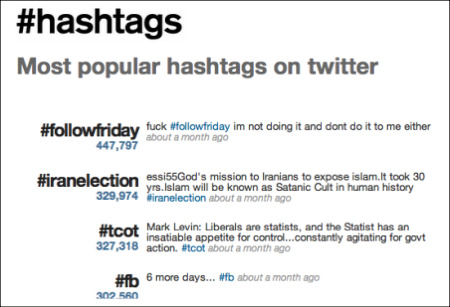
Selfie Culture
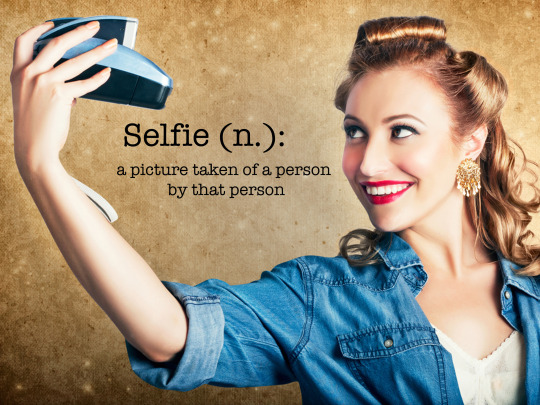
Is one feature I cannot relate to. Known as taking a picture of yourself by yourself ! I still don't get the hype and all the popularity amongst millennials in taking a picture of yourself, pouting and looking silly! Guess it’s a generation thing I am old school! But so popular amongst my sisters and kids!

Youth use networked publics to gather, socialise with their peers, make sense of and help build the culture around them (Boyd 2007) Boyd further goes on to argue that social network sites allow teens a space to work out identity and status, make sense of cultural cues, and negotiate public life. Sadly, I think they are becoming to consumed with being immersed in using social media platforms, and become less interactive when in a group or one on one. You only have to look around to see, that people out together are on their phones using Facebook instead of engaging or interacting. Known as dinner date with your IPhone.

Youth participate in a visual community it to create a sense of sociality, being where their friends are, while businesses use it to reach a certain audience or demographic to increase brand awareness and convert.
“Publics play a crucial role in the development of individuals for, as Nancy Fraser explains, “they are arenas for the formation and enactment of social identities.” (fraser 1992)
ref
Boyd, D & Ellison, M n.d., 2007, ‘Social network sites: Definition, history, and scholarship’, Journal of Computer-Mediated Communication, vol. 13, no. 1, pp. 210-230.
Chase Jarvis – ‘The best camera is the one that’s with you’ 17 Oct 2009 published in USA
Hand, M 2012, Ubiquitous Photography, Polity Press, Cambridge.
Mizuko, I 2008 ‘Introduction’, in K, Vamelis, ed. Networked Publics, MIT Press, Cambridge, MA, pp. 1-14.
Nancy Fraser, Rethinking the Public Sphere: A Contribution to the Critique of Actually Existing Democracy, Habermas and the Public Sphere, ed. Craig Calhoun (Cambridge, MA: MIT Press, 1992), 125
Images
https://s-media-cache-ak0.pinimg.com/originals/ae/1e/14/ae1e1444219bc2a0a762600e2d7d589e.jpg
1 note
·
View note
Text
Bringing Crowds together through Media in times of need

source: https://resiliencepost.com/2017/10/16/why-cmos-should-learn-how-best-to-communicate-in-a-crisis/
Social media platforms became a haven when the Manchester Terror Attack occurred. Media became knows as life-saving tools in the aftermath, as victims took to social media to help find family members whom they had lost or reach out to their families to let them know they are OK, or to emergency services for help. Facebook, was the first to act and launched it’s safety feature allowing concertgoers to mark themselves as safe also used in the Paris attacks. This is a great innovative feature of social media today, the ability to let someone know your OK using your phone as opposed to traditional media where loved ones would be required to await the news broadcast for updates. Twitter is also a great platform that constantly updates in times of crisis, including victims of storm, where they are sent location details of safe houses or emergency help over twitter. The beauty of social is the use of hastags! Such as #missingmanchester was used to locate loved ones.

source: http://www.psafe.com/en/blog/social-media-saved-lives-manchester-terror-attack/
Crowdsourcing enables a two-way communication between emergency services and official agencies which is a great tool for all involved to get in touch and provide help at a much faster rate. However, the challenges authorities face is verification. In many cases, misinformation, or inaccurate information can be as damaging as no information at all (Heather Ford) and in turn authorities are often needing to verify before acting first. The government now is spending money on getting communities educated on the importance of providing accurate information and the detrimental effects it can have on our communities if abused, such as loss of life.
In times of crisis, innovative means are becoming available for facilitating and improving the flow of information among communities when and where they need it most (Swinburne 2018) and should continue to be an innovative media in the coming years.
1 note
·
View note
Text
Trolling & Social Media conflict

While social media keeps us connected, engaged and many other benefits, unfortunately there is a down side. More commonly known as trolling, or cyber-bullying is the misuse of technology with the intent to harm, ridicule, a person psychologically or even physically. It is mainly done over social media sites such as Facebook, Instagram, Twitter, Snapchat, SMS, basically any platform where people can participate in, view or share content. To me every time I hear the word “troll” I imagine a green troll sitting under a bridge awaiting the next passer to annoy. But it’s easier than that. All you need is a computer and internet.

Bullying can cause psychological, emotional, and physical stress which can lead to isolation, depression, and suicide. Bullying in this digital era is more common behaviour in children. Problem now days is a victim can be bullied 24/7 due to the ease of internet access. It's a form of deception and manipulation, often in jest and for the tacit fun of community members (Donath 1999). To me a cyber-bully is a loser who will strive for any form of attention from others, who are bored and have nothing better to do and in turn prey on the vulnerable for their own amusement. The terrible statistic of one in five young Australians are cyber-bullied makes me tremble and pray that my kids are protected from these losers. Luckily, due to the high statistic, the government has many initiatives across schools to educate children on the effects of cyber-bullying, how they can protect themselves and what to do if they are bullied. Thankfully it is now a crime and the Commonwealth legislation governs online stalking behaviour under the telecommunications offences and other measures Act an individual and carries imprisonment. However, one argument Danah Boyd raises, is that we should not jump to blame technology as the reason for bullies, as teen behaviours have not changed, social media has just made bullying more visible to people and we must use this visibility, not to increase punishment but to help these bullies that are crying out for attention. Then intervention can be successful (Boyd 2014 p.152) The positive feature of social media platforms is the ability to share and upload a video or footage or something you are witness to that you totally do not agree with and want the world to see this person’s behaviour. Such as the below video taken on a dashcam of a U.S police officer stating to a lady he has pulled over “We kill only kill Black people”, who was fired over racist comment.
youtube
As you can see there are pros and cons with social media platforms, however at least the world now has greater visibility compared to 20 years ago.
Ref
Boyd, D 2014, 'Bullying: Is the Media Amplifying Meanness and Cruelty?', in It’s Complicated: The Social Lives of Networked Teens, Yale University Press, New Haven, USA, pp. 128-52.
Donath JS 1999, ‘Identity and deception in the virtual community’, in MA, Smith & P, Kollock (eds), Communities in Cyberspace, Routledge, London, pp. 27-58.
http://bzaf.org.au/cyber-bullying/
0 notes
Text
Activism & Protest n#4
Today social media platforms are used as information tools. Each new media has it’s own function in the media sphere. The mobilising use of each platform is mentioned as follows; ‘facebook used to set the date, twitter used to share logistics, youtube to show the world, all work together to connect people ( Gerbaudo, 2012)
Uses of social media among activists are as diverse as their venues. They are often used as a means of representation, a tool of ‘citizen journalism’ employed to elicit ‘external attention’ (Aday et al., 2010) Their primary use is for collective action, and more specifically as means of mobilisation in the crucial task of ‘getting people on the streets’(Lievrouw, 2009: 154)
However, not all protests\rallies are successful. They may gain a lot of attention at first, but without any political power behind the movement it can dissipate and become slacktivism. Take for example, the Occupy Wall street movement in 2011, co-founded by White, who now openly considers it a failure. White argues established activist organisations have ossified and become dominated by "groupthink".
"A lot of people who protest against the status quo aren't willing to protest against the status quo of protest. They don't want to shake themselves up," he says.
At the heart of White's disenchantment lies the sense that huge public rallies and colourful street protests no longer result in meaningful change. They're now exercises in what he terms "social marketing".
"Activism has become about spreading ideas, changing the way people see the world," he says.
The Occupy Wall Street movement spread across the Western world, but according to White, its lack of a coherent political strategy eventually saw it falter with little to show for its sound and fury.
White has changed his approach and abandoned traditional protest to mirror that of the right-wing Tea Party movement, the populist Five-star movement in Italy, or the left-wing Podemos in Spain who’s success in social movements was due to iterative political change where elections were won and where power is still held by the grassroots, not by their elected representatives.
Another activist who changed her approach was Sarah Corbett, who’s collective approach incorporates craft activities into political messaging, delivering a non-aggressive approach. Instead her view is to build relationships with “powerholders,”.
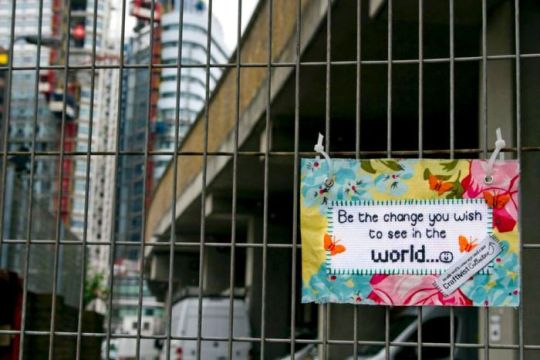
IMAGE: PROTESTERS INCREASINGLY BELIEVE THAT A GENTLER APPROACH CREATES A BIGGER IMPACT. (LINK TO LARGER IMAGE. / Flickr CC BY 2.0)
Sarah raises a very good point into her new method of Craftivism...
"If we want the world to be more beautiful, kind and just — which I think all activists do — then our activism should be beautiful and it should be kind and it should be just, or fair.," she says.
"We should treat people how we want to be treated."
While angry streets protests will still occur, society will come to a realisation that the future activism relies on quiet persistence, targeted political involvement, and the attitude to not ignore or look away. Such as the Black Lives Matter(BLM) movement. What lead to the succession of the movement, was the se of social media to maintain a focus on violence against black Americans, Mirzoeff says, prevents authorities and the population at large from "looking away".

source: http://www.abc.net.au/news/2017-10-24/black-lives-matter-protest/9080264
He is also in the predilection, that the future of effective, meaningful activism looks likely to be less aggressive, less about personal experience and more about targeted and defined objectives.
Ref
Gerbaudo, P 2012, Tweets and the Streets : Social Media and Contemporary Activism, Pluto, London.
Lievrouw, L 2011, Alternative & Activist New Media, Polity, Cambridge, U.K, p. 2.
http://www.abc.net.au/news/2017-10-25/activism-is-broken-heres-how-we-fix-it/9077372
1 note
·
View note
Text
I often ask myself, should Politicians have access to Social media? n#3
These days political parties and Politicians are using social platforms to connect with the community. Which makes sense right, due to the easy access participatory media provides, basically anyone with an internet connection can access anything they wish to read up on across any device. While some politicians and political commentators have mocked and belittled these Social Media Active parliamentary representatives, politicians can no longer afford to ignore the electoral leverage of the Twittersphere. (Posetti) Given the widespread use of social media platforms in the 21st century, and with the desire for immediate “access to information, and the freedom to be heard” (Gilpin et al. 2010, p. 2), digital citizenship emerged. MIT (2006) defines digital citizenship to represent the “capacity, belonging, and the potential for political and economic engagement in society in the information age” ('Defining Digital Citizenship' 2006, p. 2).
However, as we see in the media daily, I often wonder why some politicians still have access to any social platform. As Paula Matthewson noted on her Drag0nista blog: It’s not easy for a politician to hit the right note on Twitter. Some think it’s just another megaphone with which to blast criticisms at their opponents. Others use it to mouth their own party’s meaningless pap and propaganda.
Such as the tweet posted below..

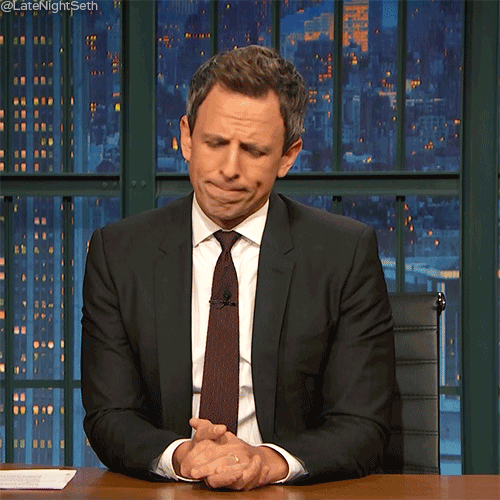
While these platforms have often been used simply to ‘broadcast’ policy announcements or speeches. One thing that has stood out is the proliferation of amateur political comment, blogs, Twitter and Facebook pages and so on. Ordinary citizens now have the ability to weigh in. This might simply take the form of ‘curating’ or circulating non-official political media content (Swinburne online week 5) We know how quickly things can go viral so you would think politicians would watch what they not only post but how they behave, however trump thinks otherwise and uses the platforms as a venting machine.
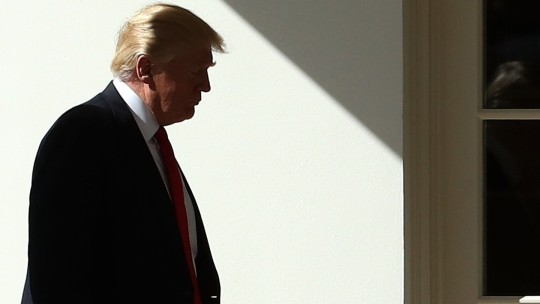
In his interview with the financial times, he states “Without Twitter, I would not be here.” Half way through the interview, he is asked if he regrets any of his abrasive tweets about allies, Mr Trump replies: “I don’t regret anything, because there is nothing you can do about it. You know if you issue hundreds of tweets, and every once in a while you have a clinker, that’s not so bad.” (FT times)
While it is a great way to reach audiences, Obama raises a very good question in his interview with Price harry and goes on to say “The question is: How do we harness this technology that allows a multiplicity of voices, a diversity of views but does not lead to a Balkanization of our society but, rather, continues to promote ways of finding common ground? Guess we will have to wait and see….
youtube
References:
Jericho, G 2012, 'How many votes are there on Twitter?', in The Rise of the Fifth Estate, Scribe, Victoria, Australia.
Postetti, J & Lo, P 2012, The Twitterisation of ABCs Emergency & Disaster Communication, Australian Journal of Emergency Management, Vol. 27, no. 1, pp. 34-39.
Young, S 2010, 'News, political reporting and the internet', in How Australia Decides, Cambridge University Press, Victoria, Australia.
Financial times interview source: https://www.ft.com/content/943e322a-178a-11e7-9c35-0dd2cb31823a
Images
https://www.ft.com/content/943e322a-178a-11e7-9c35-0dd2cb31823a
https://www.youtube.com/watch?v=XPGHSbJ7lxs
0 notes
Text
Social media platforms and their Affordances #2
What are affordances?
Defined as “The value of a well-designed object is when it has such a rich set of affordances, that the people who use it can do things with it that the designer never imagines” (Norman,2011).
Think about all the cool things once can do now from your smartphone, now think about your Instagram, snap chat, Twitter and Facebook apps. You will come to a realisation that these social platforms are continuously being evolved and innovated to keep up with the staggering growth and use of technology. Every time you update your software on any of your devices, you get a new gift!! We all love gifts!!! A new functionality in Instagram or FB stories and my fav a new snap chat filter. Yes, you know the ones that make us look like something we don’t.

#Instagram filters
When using any media platform, four parameters considered most important to most, is the speed, personalisation, portability, and world-wide connectivity. One of the most defining phenomena of the present time, is the internet which is shaping the world offering worldwide access. The power of social networking is such that, the number of worldwide users is expected to reach some 2.95 billion by 2020, around a third of Earth’s entire population. (https://www.statista.com/topics/1164/social-networks)
Wellman argues that although networks pre-dated the new media, 'recent technological developments have afforded their emergence as a dominant form of social organization. The fact that you don’t have to be tied to a PC and able to access the internet wherever you are in the world, through any device that allows us to be completely independent of locality. Think of Skype, business uses Skype to collaborate across various parts of the world, my mother uses Skype daily to speak to her family in Lebanon. Now this was not around 10 years ago as I distinctly remember purchasing an overseas phone card on a weekly basis. My how far we have come and think about what the future may bring. My mind wanders to Tony Stark, Elon Musk the possibilities are endless.


#AI
You may remember back in Nov 2015, Twitter changed the favourite button from a start to a heart shape. Described by the press as ‘one of the biggest changes to its platform yet’ (Clifton, 2015), the
Twitter change caused a storm of reactions from its end-users:
1. ‘I hate the twitter heart so hard’ — (@twocitylife, Nov 3, 2015)’
2. ‘Twitter's acting like they invented the heart’ — (@kumailn, Nov 3, 2015)
This change created much heated controversy, which indicated to developers that a feature is simply not just a feature. The symbol matters. Features are ‘communicational actors’ in the sense that they ‘produce meanings and meaningfulness’ (Langlois, 2014: 52). Twitter realised and explained the change as ‘We want to make Twitter easier and more rewarding to use, and we know that at times the star could be confusing, especially to newcomers’ (Kumar, 2015). By changing the name and icon of a feature linked to a core platform activity (‘favoriting’), Twitter not only standardized a mode of engagement across its services (‘liking’), but also affected the perceived range of possible actions linked to these features of the platform, or its affordances. At one stage, Instagram features were taking the world by storm, but not long after Facebook made their changes and continue to innovate and update their platform.

#thebattleoftheplatforms #whowillwin
According, to the latest 2017 stats obtained from the sensis report, it shows how on how the changes have created an uplift in usage and we will see this continue to increase as affordances become desired.

References
http://affengineer.com/2016/03/30/snapchat-vs-facebook-vs-twitter-instagram/
http://www.annehelmond.nl/2016/08/01/the-affordances-of-social-media-platforms/
http://www.annehelmond.nl/wordpress/wp-content/uploads//2016/07/BucherHelmond_SocialMediaAffordances-preprint.pdf
https://hips.hearstapps.com/hmg-prod.s3.amazonaws.com/images/ariana-grande-hailey-baldwin-1475788239.jpg?crop=1.00xw:1.00xh;0,0&resize=768:*
https://www.teslarati.com/elon-musk-tech-leaders-call-un-ban-killer-robots-ai-weapons/
https://www.sensis.com.au/asset/PDFdirectory/Sensis_Social_Media_Report_2017-Chapter-1.pdf
Swinburne Online, 2017, “What are Affordances” MDA20009, viewed 10th December 17.
0 notes
Text
Social Media & Digital communities #1
In week 1 Sherry Turkle painted the exact nature of the society we live in today, and I could not have said it any better “Connected but alone”. How often do you find yourself at a gathering in the same room with friends and family but everyone is on their devices? This I’d rather text than talk behaviour and is defined as being together but not together (TED-Ed 2013) On a daily basis I see people on the train, bus, even crossing the road with their heads in their devices completely oblivious to what or who is around them. These days people are perpetually connected through a series of devise and social media channels, 'digital natives' being 'always on'. (Danah Boyd,2017 p.72)
It is not the technology we are addicted to. Humans are both curious and social critters. It is more related to FOMO, the fear of missing out. We want to continuously interact and show others what we are doing, were we eat, how good our coffee looks, the functionalities and innovations that continuously change on the social platforms allow us to be able to show these off in a pretty fun way. With today’s belief of ‘I share therefore I am’, creates a misconception that you are not alone, but to my belief, like Sherry, it feels more like a problem people are trying to solve by remaining connected. (TED-Ed 2013)
Did you know that the average person has five social media accounts, (I know I have 4) and spend around an hour and 40 minutes a day browsing or posting, which is 28% of their time on the internet? Crazy isn’t it! With the new technologies and functions evolving I can only see this figure sadly on the increase.
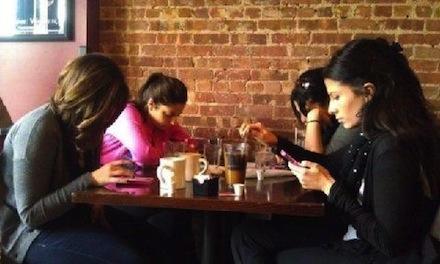


Digital communities on the other hand, allow individuals to meet like-minded people, to express their identities without any fear of exclusion or ostracism, and they can therefore escape the boundaries of their local communities. While traditional communities are often skeptical towards newcomers, virtual communities tend to be more open, happily welcoming new members. In addition, even if people cannot find a virtual community that can accept them, they can easily set up a new one (Castells, 2004) LinkedIn is a type of community, it allows professionals who are merely acquaintances and are able to connect from anywhere in the world, share ideas, recruit and share interests aka weak ties. According to Granovetter found that weak ties, rather than close friends, in a network provide bridges to other networks and other people. Were it not for such weak ties, argues Granovetter, we wouldn't be connected at all.

references
Siapera, E 2012, ‘Socialities and Social Media’, in Understanding New Media, Sage, London.
TED-Ed 2013, Connected, but alone? Sherry Turkle, 19 April, viewed 3 August 2016, <https://www.youtube.com/watch?v=rv0g8TsnA6c>.
Images
https://media.licdn.com/mpr/mpr/shrinknp_800_800/AAEAAQAAAAAAAAQOAAAAJDNmODRkNTFlLWVkYTItNDM5MS05MjNhLTVjMTRmZGQ5OTdiOA.jpg
https://cdn-img.xojane.com/sites/default/files/styles/article_inline/public/MTI0ODc2NDcyMDk0ODc5NzE0.jpg?itok=EOKJ3z-a
http://www.telegraph.co.uk/finance/newsbysector/mediatechnologyandtelecoms/11610959/Is-your-daily-social-media-usage-higher-than-average.html
http://www.wordstream.com/blog/ws/2017/01/05/social-media-marketing-statistics
0 notes